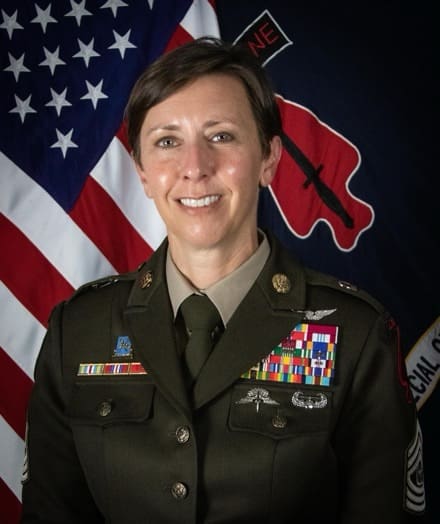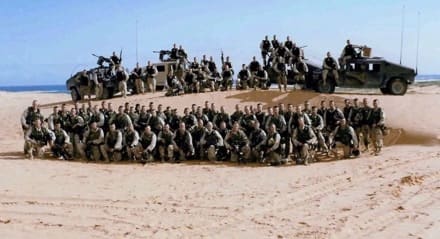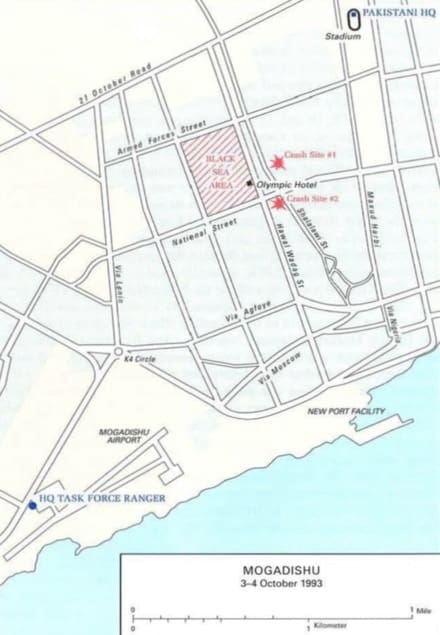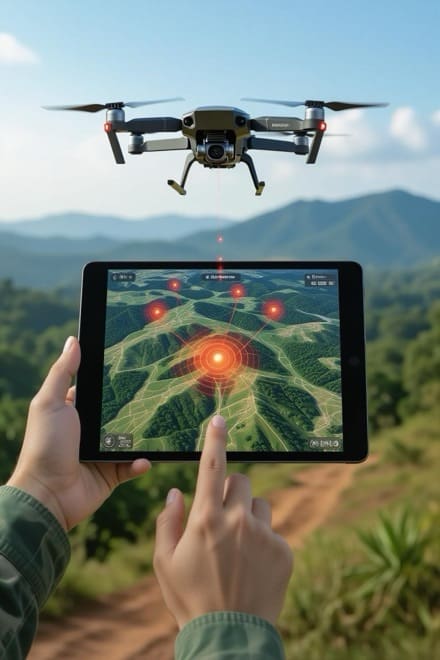McLean, VA — October 8, 2025) FN America, LLC is pleased to announce that it has delivered test and evaluation samples of two all-new weapon systems – LICC-IWS and LICC-AMG – along with ammunition as part of a long-term development contract with the Department of Defense’s Irregular Warfare Technical Support Directorate (IWTSD). FN also conducted new equipment training (NET) and armorer’s training for both systems to demonstrate maintenance at the unit level.
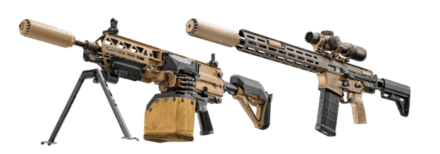
FN America developed the weapon systems with feedback from individual operators, based on the U.S. Government goal of providing overmatch against near-peer threats. The systems were recently assigned National Stock Numbers (NSN), simplifying the acquisition process.
The LICC-IWS program is comprised of the 6.5×43 LICC (Lightweight Intermediate Caliber Cartridge) ammunition, the LICC-IWS (Individual Weapon System) with FN® IPC (Improved Performance Carbine), purpose-built magazine and signature suppressor. The LICC-AMG is based on the success of the prototype LICC ammunition and LICC-IWS system and is comprised of the LICC-AMG (Assault Machine Gun) belt-fed machine gun, signature suppressor, family of common ammunition, and lightweight links. Multiple users will test the operational samples , providing critical feedback to aid FN and IWTSD in the final development of the systems.
“FN’s ultimate goal is to advance from development into production and field a final solution that provides operators a system that is easier to operate, more accurate and more effective than anything available today,” said Mark Cherpes, President and CEO for FN America. “After this test and evaluation phase, our plan is to take user feedback, fine-tune the systems and move into low-rate initial production.”
LICC Weapon Systems and Ammunition
FN designed the LICC-IWS individual weapon system to improve lethality, accuracy, durability, balance and handling over the M4A1. The improved performance derives from a new 6.5×43 LICC lightweight ammunition , based on the U.S. Army Marksmanship Unit’s .264 USA; a 25-round purpose-built, polymer magazine; a signature suppressor, and the FN IPC. The FN IPC features a completely new architecture, well-suited to meet the challenging program requirements and address the feedback from operators who have contributed since the beginning of the program.

The LICC-IWS IPC handles much like an M4A1 but with key improvements to deliver a fully ambidextrous platform with unique takedown method and highly adjustable buttstock, which allows for user-selectable left- or right-hand side fold capability. It operates from a robust long-stroke gas piston system and features multiple buffers that reduce felt recoil, resulting in an extremely soft shooting weapon.
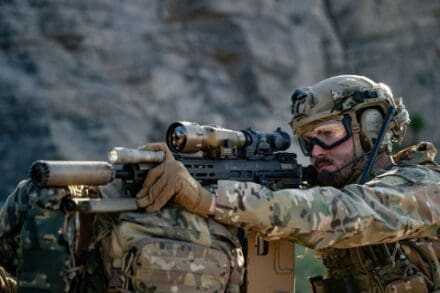
Additionally, it features a unique self-regulating gas system with on-off capability, and newly patented bullet technology developed from efforts to mature the 6.5×43 cartridge, that greatly improve system reliability and accuracy.
The LICC-IWS has been developed and is being tested in three different barrel-length models – a 12.5” Close Quarters Battle option, a 14.5” Carbine option and an 18.0” Designated Marksmanship Rifle option (RECCE).

“Initial test firing results from the U.S. Army Marksmanship Unit and other operators show that the accuracy of the LICC-IWS is consistently two times better than the M4A1,” said Jim Williams, Vice President, Military Programs for FN America. “Additionally, the LICC-IWS handles like the M4A1, yet remains soft shooting when firing the new 6.5×43 lightweight ammunition.”
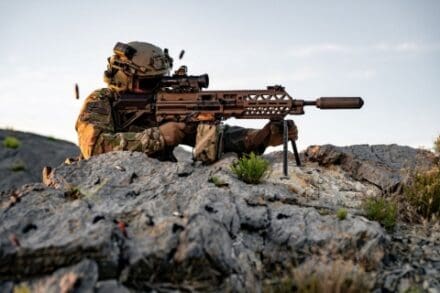
Adapted from the FN Evolys®, the select-fire LICC-AMG is a shoulder-fired, belt-fed lightweight weapon system chambered in 6.5×43 LICC with a continuous monolithic top rail and an innovative side feed featuring a lightweight metallic link. In prototype testing, the AMG was more accurate than the FN MK 48 in full auto mode. Overall, the AMG demonstrated improved performance in lethality, accuracy, durability, balance and handling over the FN M249 and FN MK 46/MK 48 machine guns.
“Creating totally unique weapon systems around a specific caliber is in FN’s DNA,” said John Bungard, Sr. Director, Military Development Programs for FN America, LLC. “As our team worked on the LICC-IWS program, quickly followed by LICC-AMG, we were able to leverage our decades of engineering expertise across multiple weapons and ammunition platforms to come up with the ideal solution for today’s global threats.”
FN’s LICC-IWS and LICC-AMG submissions are ground-floor development efforts based on the IWTSD concept and FN’s unique 6.5x43mm LICC caliber developed with input from the U.S. Army Marksmanship Unit, IWTSD and individual operators. A family of lightweight, stainless steel cased 6.5×43 caliber ammunition was designed to reduce the carried weight of the system by 20% compared to equivalent brass cartridges, while achieving improved results in accuracy, range and performance over current fielded 5.56 ammunition, including M855A1 (5.56x45mm).


Irregular Warfare Technical Support Directorate (IWTSD)
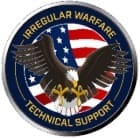 The IWTSD exists to identify and develop capabilities for the Department of Defense (DoD) to conduct irregular warfare against all adversaries, including Great Power competitors and non-state actors. The IWTSD delivers those capabilities to DoD components and interagency partners through rapid research and development, advanced studies and technical innovation, and provision of support to U.S. military operations. In addition, the IWTSD directly manages bilateral agreements with five partner countries: Australia, Canada, Israel, Singapore and the United Kingdom.
The IWTSD exists to identify and develop capabilities for the Department of Defense (DoD) to conduct irregular warfare against all adversaries, including Great Power competitors and non-state actors. The IWTSD delivers those capabilities to DoD components and interagency partners through rapid research and development, advanced studies and technical innovation, and provision of support to U.S. military operations. In addition, the IWTSD directly manages bilateral agreements with five partner countries: Australia, Canada, Israel, Singapore and the United Kingdom.
“FN is excited to partner with the IWTSD to begin final testing and evaluation of the new LICC IWS and AMG systems,” said Bungard. “We cannot wait to get additional user feedback, fine-tune the systems and begin production of what promises to be the next groundbreaking FN platform.”
NSNs Assigned to Select Variants
Three variants of the LICC-IWS have been assigned national stock numbers (NSNs) and are available for requisition by Army, Navy, Marine, Air Force and SOCOM elements and activities. The three variants currently available for request are a 12.5” Close Quarters Battle option, a 14.5” Carbine option and an 18.0” Designated Marksmanship Rifle option, along with two suppressors supporting the system. The NSNs are:
NSN 1005-01-729-0039, FN IMPROVED PERFORMANCE CARBINE 12.5 IN CQB WITH BII*
NSN 1005-01-729-0052, FN IMPROVED PERFORMANCE CARBINE 14.5 IN CQB WITH BII*
NSN 1005-01-729-0046, FN IMPROVED PERFORMANCE CARBINE 18.12 IN REECE (sic) WITH BII*
NSN 1005-01-728-9868, SUPPRESSOR, FLOW 264 FOR IMPROVED PERFORMANCE CARBINE
NSN 1005-01-728-9874, SUPPRESSOR, FLOW 7.62 FOR IMPROVED PERFORMANCE CARBINE
*Basic Issue Items
FN and the U.S. Military
Throughout its history, FN has been one of the largest suppliers of small arms to the U.S. military and continues to develop innovative, future technology. The company currently holds contracts for the FN® M240 and its variants, the FN® M249 lightweight machine gun; the FN® MK 46, MK 48, MK 17 and MK 20 SSR for USSOCOM and various other contracts.
For more information about FN’s military product line or current U.S. military contracts, please visit www.FNAmerica.com.


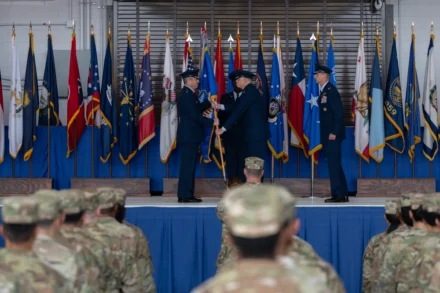







 The IWTSD exists to identify and develop capabilities for the Department of Defense (DoD) to conduct irregular warfare against all adversaries, including Great Power competitors and non-state actors. The IWTSD delivers those capabilities to DoD components and interagency partners through rapid research and development, advanced studies and technical innovation, and provision of support to U.S. military operations. In addition, the IWTSD directly manages bilateral agreements with five partner countries: Australia, Canada, Israel, Singapore and the United Kingdom.
The IWTSD exists to identify and develop capabilities for the Department of Defense (DoD) to conduct irregular warfare against all adversaries, including Great Power competitors and non-state actors. The IWTSD delivers those capabilities to DoD components and interagency partners through rapid research and development, advanced studies and technical innovation, and provision of support to U.S. military operations. In addition, the IWTSD directly manages bilateral agreements with five partner countries: Australia, Canada, Israel, Singapore and the United Kingdom.